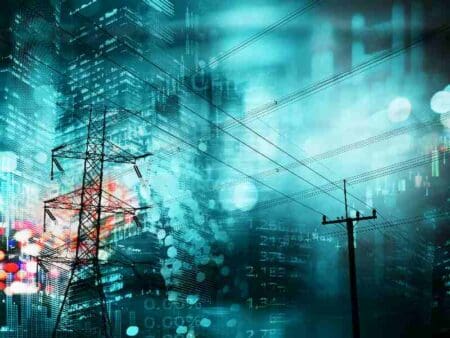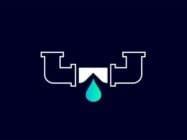
As our energy systems become increasingly complex and digital, technologies have had to be developed to ensure planning and operations can be coordinated in as efficient way as possible. For Energy Exemplar CEO David Wilson, who spoke to Yusuf Latief in an exclusive interview, digital twins are such a technology, providing heightened insight across assets to best manage risk and secure supply.
“Need for speed” has become a common adage, reflecting industry frustration with the pace of the energy transition, whether in Europe or elsewhere. The speed with which clean tech has been picked up simply hasn’t been fast enough, partially a result of the increasingly complex nature of our energy systems.
However, as the systems continue to become more integrated and digital, digital twin technologies have been consistently proving their value, especially when it comes to digital grid coordination and expediting processes that traditionally have been painstakingly long.
On the technology, I spoke to the Wilson, CEO of Energy Exemplar, an Australia-based software development company operating globally to provide electric power, gas and water simulations as well as generation, transmission, smart grid and capacity expansion planning.
In what ways do digital twins help with coordinating an increasingly digitalised grid?
Like most industries, the energy sector has become much more complicated over time.
It used to be relatively simple; there were a few large generating assets, power would go through relatively simple transmission, flowing out from distribution into load centres. Over time this has changed drastically.
Now there’s a lot more distributed generation; smaller generation, either embedded domestically or, through the system, connected wind and solar. And now for the first time storage is being connected into the system with batteries. Last but not least there are an increasing number of smart devices both domestically and industrially.
Because of this complexity, understanding the problem is now much more complicated than in the past. Congestion has become much more complex and creates an orchestration problem.
Questions arise around coordinating assets, both generation and transmission as well as flexibility, which is introduced through grid integration of storage systems and the heightened ability to control demand. All of these are of utmost importance and figuring out how to orchestrate it all and getting it to work in sync is a very important question to tackle.
A big part of the work of digital twins is to understand the capacity of each asset, what they can do and how to get them to work together for the best outcome.
Have you read:
Digital twins bring benefits for energy policy makers – report
Bentley Systems extends infrastructure digital twins
Would you say that this lends to heightened visibility across infrastructure?
Anytime someone gets more awareness of the operating environment, they can make better decisions. This is especially true with building digital twins into the energy system.
Energy systems are continuously becoming more integrated. It’s no longer as it was in the past when we were able to think of different parts of the system independently and make decisions accordingly.
Europe proves a good example with the impact of the Ukraine crisis. Russia turning off the gas illustrated the interconnection of gas and electricity networks. A lot of electricity is generated from gas, but so too for heating. Similarly, as transportation and industry electrifies more, those networks are more tightly coupled. To understand the energy system, one can’t just look at a single piece, it needs to be understood in its totality.
And we’re seeing that move even further into the future, particularly with hydrogen – which is especially the case for Europe, although we expect it to accelerate around the world. This creates another level of integration, particularly into the electricity sector. It also creates flexibility and opportunity where excess renewables can be leveraged for storage.
To understand the system and to operate successfully in the energy systems of today, the big picture needs to be understood with good situational awareness.
We need to understand how everything is interconnected, what dependencies are where and what the state is of each of those different assets.
The EU Projects Zone Podcast: SmartBuilt4EU with Régis Decorme
When it comes to the ‘need for speed’ barrier so often cited within the industry, how do digital twins provide a solution?
Especially on the planning side, there are many elements to planning and integrating new assets into the energy system.
When it comes to physical elements, we need to account for the effect on congestion, reliability, system stability and more.
All of these can be, and in many cases are, tackled by digital twins. What’s happening at the moment is integrating all of these different elements.
In the past, for example, congestion has been looked at using one part of a software package, or one twin rather. Then evaluation would go on to grid stability with another. A big part of the ongoing work today is integrating all those into one workflow or digital twin, which enables speedier decision making.
For example, someone goes to a system operator and says, “I want to attach a large solar farm to the network”. This can be added to an existing digital twin or model to see what the impact would be and then generate a response relatively quickly. Or, in a different scenario, all requested attachments can be looked at; those with the greatest merit can be selected based on specific criteria and permits can be accessed accordingly.
And this is done much quicker through a digital twin’s lens compared to the past. What this does is accelerate planning cycles and streamline operations accordingly.
With energy networks becoming more sophisticated and complicated, these processes are too much work without digital assistance.
In the past, when the main consideration was a couple of handfuls of big thermal assets being dispatched, the process could have been done relatively simply. But once there are thousands or millions of assets in the network, this is no longer the case.
Also of interest:
Technology Trending: grid control software, industrial digital twin, BMW iX5
Gridspertise boss highlights digital leapfrog opportunities for European DSOs
How can this tech support governments with scenario planning?
We had a really good conversation with the European Union recently and this relates to the importance of scenarios. The future is no longer a simple single path. It’s more like a statistical set of possible outcomes. There are many scenarios that could play out in the future and they’re all possible.
The question begs then of how best to run all possible scenarios of all possible futures to make sure the picked decision is the best one possible.
And one of the fascinating things illustrated by the case of the EU is that they had been running these scenarios, but they weren’t running ones that were ‘extreme’ enough.
They modelled what would happen if one of the gas pipelines to Russia was turned off, not what would happen if all of them were turned off and what the system would then look like.
Another case is that of the Australian energy market operator. Every month, they run 25,000 scenarios of what could happen over the next two years in the country’s energy system to see that the system will be going to be resilient under any given scenario to more than meet requirements.
And that’s how this powerful tool needs to be used. It’s not just a single look into the future. It’s running all scenarios to see the green ticks and make recommendations and decisions to best manage risk and ensure secure supply into the future.
ABOUT DAVID WILSON

David Wilson is CEO of Energy Exemplar. After completing a degree in mechanical engineering with a focus on thermodynamics at the University of Melbourne and spending 25 years in technical industries, Wilson joined the company in 2017.








